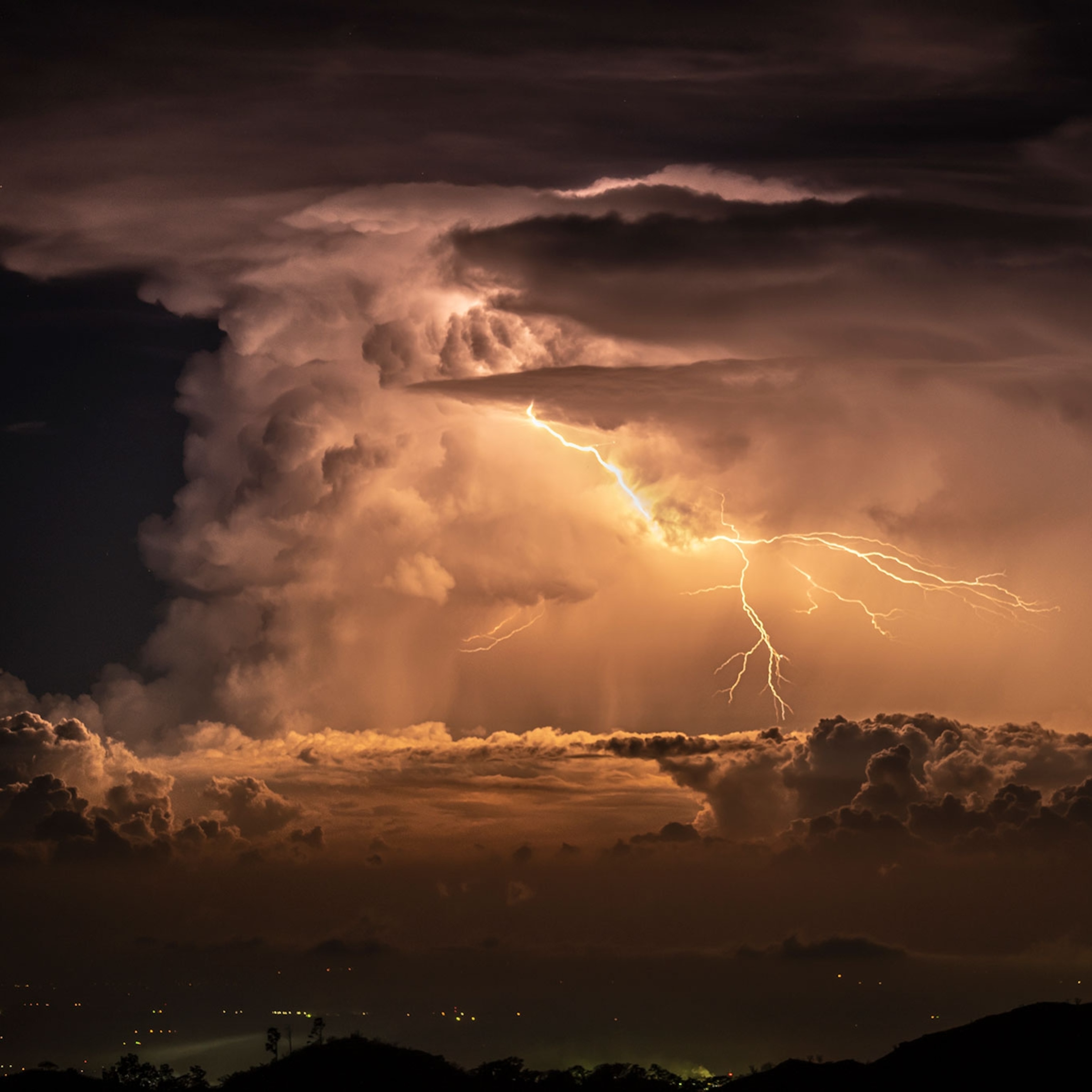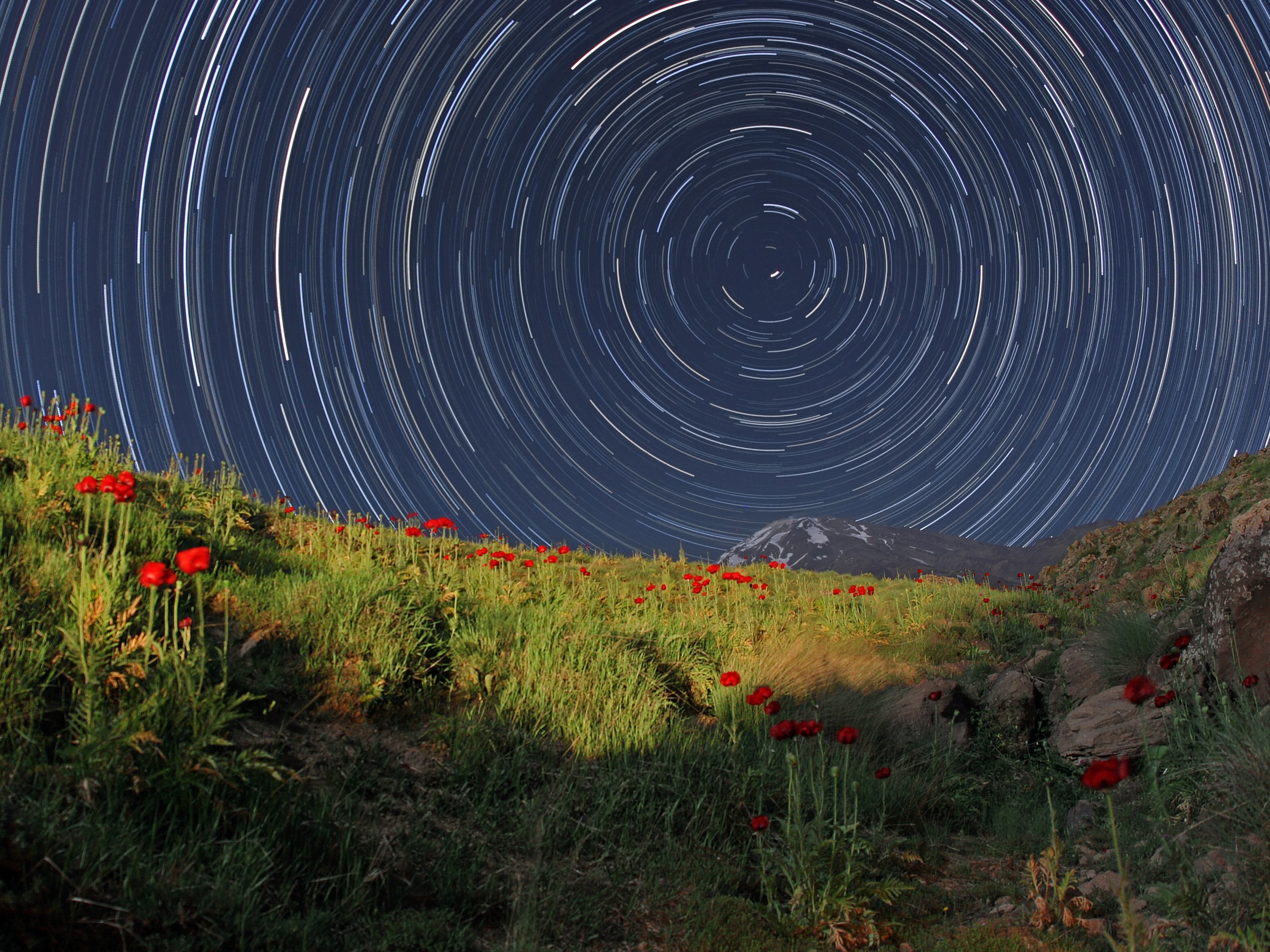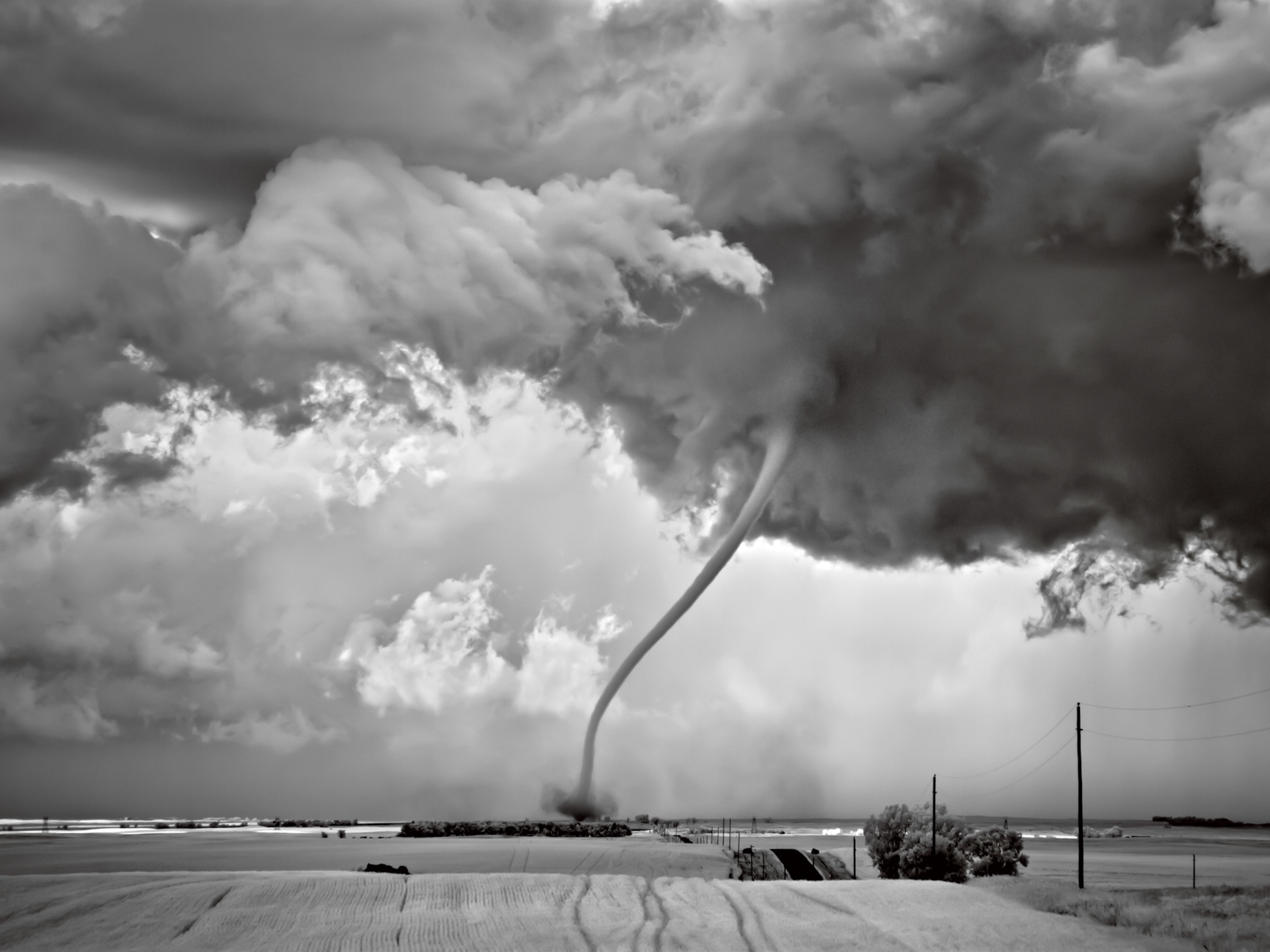Tonga's volcanic eruption triggered a staggering 2,600 lightning flashes a minute
The enormous eruption generated hundreds of times more power than an atomic bomb—and the most extreme lightning ever recorded. How did it happen?

With hundreds of times more power than an atomic bomb, the Hunga volcano sparked the most intense display of electrical activity ever recorded.
After weeks of grumbling and spitting ash, the underwater caldera near the tiny Kingdom of Tonga reached an unexpected fever pitch on January 15, 2022. In the world’s largest volcanic eruption in more than a hundred years, the Hunga volcano belched 2.3 cubic miles of molten rock and vaporized 146 teragrams of water—enough to fill 58,000 Olympic swimming pools.
The resultant plume—a mushroom cloud of volcanic gases, magma bits called tephra, and vaporized seawater—towered 36 miles high, about halfway to space.

But what really rattled volcanologists? The initial readings showed an enormous ring of lightning expanding from the eruption’s epicenter at around 180 miles per hour. (Read how the Tonga eruption destroyed an island—and created many mysteries.)
Volcanic lightning is well documented—even Pliny the Younger mentions it in his account of the eruption of Mount Vesuvius in 79 A.D.
But “I don’t think any of us really expected to ever see a 280-kilometer-diameter donut of electrical discharges,” says Alexa Van Eaton, physical volcanologist with the United States Geological Survey and lead author of a new paper on the Hunga event.
Van Eaton’s research, published this month in the journal Geophysical Research, shows the eruption created the most intense lightning event in the scientific record, generating a staggering 2,600 lightning strikes per minute at its peak. That’s more than double the previous titleholder—a 1999 thunderstorm in the U.S. Southeast, when NASA counted 993 flashes a minute.
And after combining data from several remote-monitoring systems, she and her team believe they’ve reconstructed how it happened: Plume particles surfing a volcanic “gravity wave” created the perfect storm for record-setting lightning.
Eavesdropping on plasma
Since very few of the world’s active volcanoes are directly monitored, volcanologists piggyback on other monitoring networks to get insight into eruptions in progress, according to Corrado Cimarelli, a volcanologist at the Ludwig Maximilian University of Munich in Germany.
Fortunately, a U.S. weather satellite accidentally captured a bird’s-eye view of the Hunga eruption, allowing them to map the plume’s development. But the satellite’s onboard lightning-detection system only spotted occasional flashes. For Van Eaton to map the lightning ring, she’d need to tune in to the radio. (Read more details about how the Tonga eruption occurred.)
Thunder isn’t the only sound lightning makes. When lightning streaks across the sky, “sometimes you see it pulse—you see it flicker a couple times,” Van Eaton says.
That pulse is electrons moving through a plasma channel, creating a powerful electromagnetic signal that manifests as both visible light—the bright flash—and radio waves outside the range of human hearing that can be detected thousands of miles away.
Three ground-based, lightning-detection networks picked up on radio waves from the Hunga eruption, and by meticulously combining their data, Van Eaton and her team were able to plot location, intensity, and timing for more than 200,000 lightning flashes.
The final tally—which Van Eaton is confident is an underestimate—clocked a rate of about 2,600 flashes per minute at the height of the ring’s intensity. That’s a truly astonishing number, according to Eric Bruning, an associate professor of atmospheric science at Texas Tech University and wasn’t involved in the study.

“A low-end, average thunderstorm might have a lightning flash every minute,” says Bruning. “In big supercell thunderstorms—the kind that make tornadoes—those will have flash rates in the hundreds per minute. [The rate of lightning in the Hunga eruption] is an order of magnitude higher.”
The location data gives the Hunga event another superlative—lightning was recorded miles higher than ever thought possible, which researchers chalk up to the copious amounts of hot seawater injected into the atmosphere.
Surfing a gravity wave
Another unusual feature of the Hunga eruption is gravity waves, which occur when a trigger—such as a volcanic plume, composed of extremely hot volcanic gases, ash, and vaporized water—pushes air up or down.
These waves can be more buoyant than the surrounding atmosphere, which creates distinct layers, like oil and water.
Whereas an object would fall straight down after reaching its maximum height, in this case the plume is trapped above the layer of normal atmosphere—meaning as it falls, gravity forces the plume out horizontally, creating waves like ripples in a pond.
Riding the gravity wave are bits of tephra and vaporized seawater. As the water vapor rises high into the atmosphere, it rapidly cools, forming ice crystals and tiny pellets of soft hail called graupel. The ice bits accumulate static as they scrape past each other, forming what are essentially electrically charged “Dippin’ Dots,” Bruning says.
This “ice-charging” process is also how lightning forms during a normal thunderstorm; volcanic eruptions add the special sauce of “silicate charging” as tephra generate their own charge through a similar process. (See stunning photos of lightning.)
Van Eaton and her team argue that the leading edge of a gravity wave would be tailor-made for generating lightning. The sharp edge of the wave may separate particles by size—encouraging ash and tiny ice crystals to drift upward while denser particles like graupel or tephra slide down, like surfers on a wave. That helps form distinct areas of charge, setting the stage for lightning to correct the imbalance.
Bruning says the study authors have come up with a “compelling physical explanation” for a mysterious phenomenon that left volcanologists and meteorologists alike scratching their heads.
But there are still mysteries galore. As Van Eaton points out, there’s a point at which the lightning ring appears to dissipate—and then the donut hole backfills with thousands of flashes.
“We don’t have any answers” for the donut hole, Van Eaton says. “That’s going to be probably five Ph.D.s down the road.”
Why care about volcanic lightning?
Researchers say that tracking volcanic lightning could be an important tool for “nowcasting” eruptions—with potentially life-saving implications.
During volcanic activity, that thick plume makes it impossible for satellites to see whether an eruption has run its course or new jets of lava are still emerging. But as scientists learn more about how volcanic lightning forms, they can use real-time data to guide evacuations and public health decisions, says Cimarelli. “The rate of lightning can actually tell you if a new jet is coming out.” (Learn how volcanic lightning can warn of dangerous eruptions.)
Volcanic ash is hazardous to aircraft and communities downwind, adds Van Eaton.
“Any tools that we can bring to bear for earlier detection, for rapid characterization of what’s happening—that could impact airspace and people.”








